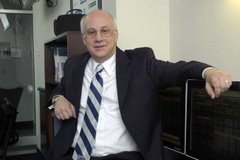Jeffrey Miller, PhD, a fellow academic and professional money manager discussed on his blog, A Dash of Insight, errors made by market strategists and others by looking at descriptive statistics in a simplistic manner. This was also discussed by Brett Steenbarger on Trader Feed. I discussed this in my class at Seton Hall University. Here are my thoughts:
1. Using a single variable model increases the risk of Type II or ß errors. Thus you have to increase the variables and thus degrees of freedom in your statistical study to arrive at what is considered a statistically significant model.
2. Anecdotal observations are interesting as starting points but are a mean not an end in research.
3. All too often market strategists and other individuals make the mistake of form fitting data to meet their pre-conceived bias. In other words, they are trying to prove a conclusion by finding data to support the conclusion rather than derive a conclusion from a set of observations.
4. You need to back test under various conditions with multiple queries. Failure to do so will just induce more Type II errors.
I used a very simple example with my students by asking them if they watch the Syndicated TV show Elimidate as it was something that they can relate to. Most did watch (as I admit so do I from time to time). On Elimidate, four contestants go on a date with a single member of the opposite sex. The contestants are then eliminated one at a time by the single dater until a winner is selected from the four suitors. Then I asked the students to be honest and acknowledge if they try to guess the eventual winner at the beginning of the show. Again they overwhelmingly said yes. Oh course, I explained to them that their selection was made solely on their own bias based upon their own desired result, not that of the individual who was making the determination of the four contestants. It is not until more research was done by the single dater making the selection into the personalities of the four contestants was a winner determined.
As to the impact of the Federal Open Market Committee’s decision to pause or end an interest rate tightening cycle, I discussed with the class work that I published on TheStreet.com’s Street Insight where I was able to conclude that the end of a tightening cycle was positive for certain sectors of the market, such as the broker-dealers/investment banks. I pointed out that at the same time, the end of the tightening cycle might not fare as well for other sectors and suggested that they perform more research on their own at the Seton Hall Trading Room.
Lastly, there are some excellent market strategists who are top notch in my book. I am not implying that all market strategists are in any way guilty of using slipshod methods in their analysis, so its best that you know who is the best out there. In my book and in no specific order, theses are amongst the best:
Brian Reynolds - MS Howells
Tony Dwyer - FTN Midwest Securities
Richard Bernstein - Merrill Lynch
At the time of this blog entry, Scott Rothbort, his family and or clients of LakeView Asset Management, LLC were long shares or calls or Merrill Lynch (MER).
Sunday, September 24, 2006
Subscribe to:
Post Comments (Atom)

No comments:
Post a Comment